When Nick and I were in Scotland last year, it was so nice to show him some of my well-known and favorite spots. But it was very exciting to explore parts of Scotland that I’d never been to, so that the experience could be new for us both.
This was the case with Caerlaverock Castle, which is located in Dumfries and Galloway, near the coast.
I’d heard about the castle — I’d seen it in the romantic comedy “The Decoy Bride” but that is about it. When we planned to visit this area, I saw that it would be in our path, so we decided to go.
It’s a magnificent place. The entry — it’s unique triangular curtain wall — hides the scale of the castle, so when you walk through, it is quite a surprise.
The word Caerlaverock (which I always thought sounded a little Welsh) probably comes from the old British caer, the word for fort, and laverock, another name for a lark.
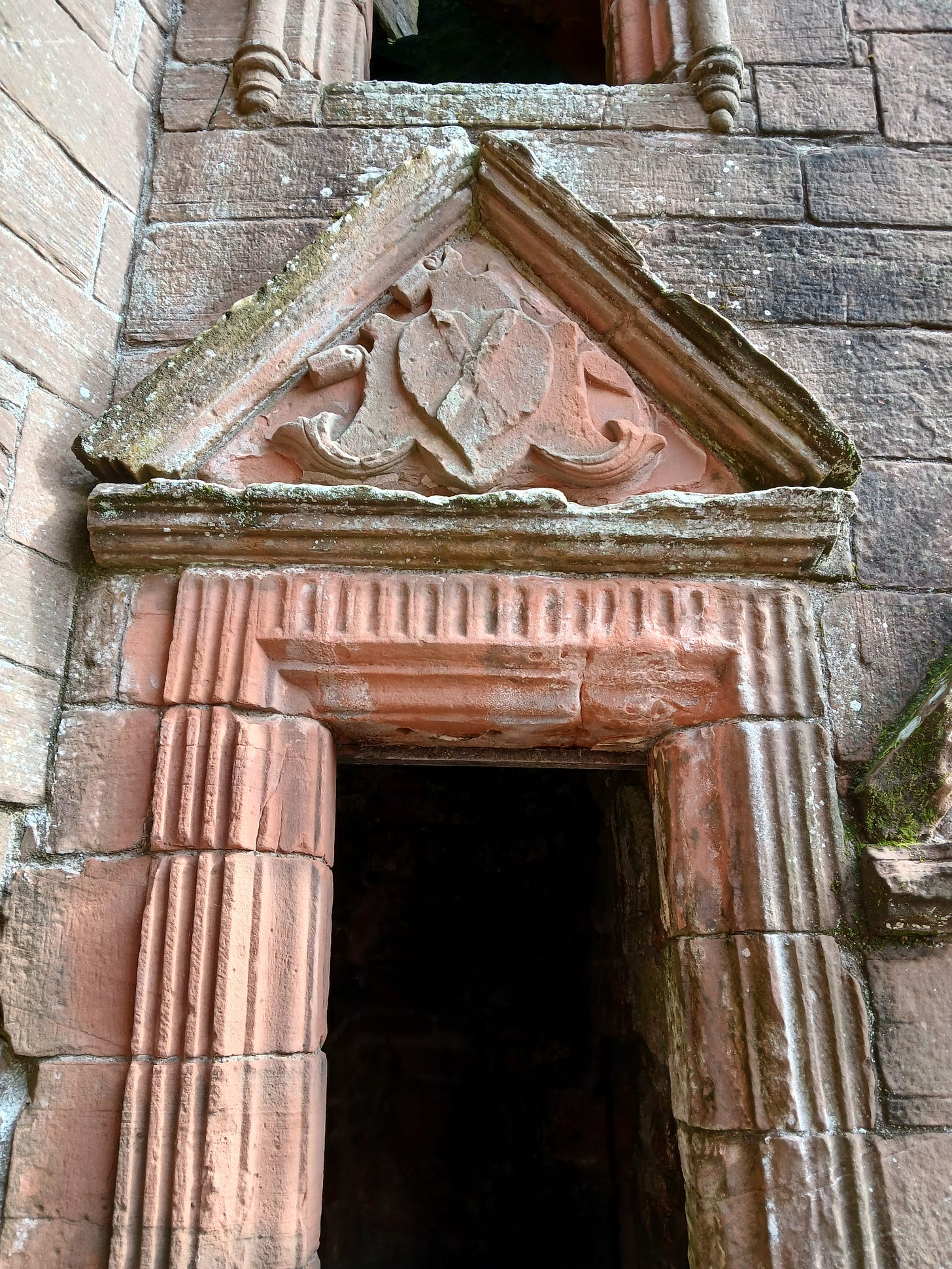
When we bought our ticket, we were told about the ruins of the earlier castle, beyond this one. We were interested in seeing this, but didn’t venture, as the ground was pretty muddy. Only foundations remain of this older castle, built in the 1220s.
The castle we did see had been built in the 1270s, just after the old one was abandoned. It was the home of the Maxwells, who were deeply involved in the history of Scotland. Shortly after the new castle was built, in 1300, it was besieged by the English. And not only that, but Eustace Maxwell destroyed much of his brand-new castle, so that it would be useless to the English, an action which was later rewarded by Robert the Bruce.
The castle1 was rebuilt in the 1330s, and various repairs and rebuilds continued. In the 16th century, the defences were reinforced, and in the 17th century, the ‘Nithsdale Lodging’ was built, a new mansion within the castle built by the 10th Lord Maxwell (who was elevated to the earldom of Nithsdale in 1620). It is this ‘Nithsdale Lodging’ that has the ornate stonework seen in the above photo with the St. Andrew’s Cross.
It is difficult, while wandering around a ruined castle, to imagine floors where now there is only empty space, or fireplaces that were once full of roaring logs. It must have been grand, especially in the 17th century, with the new additions.
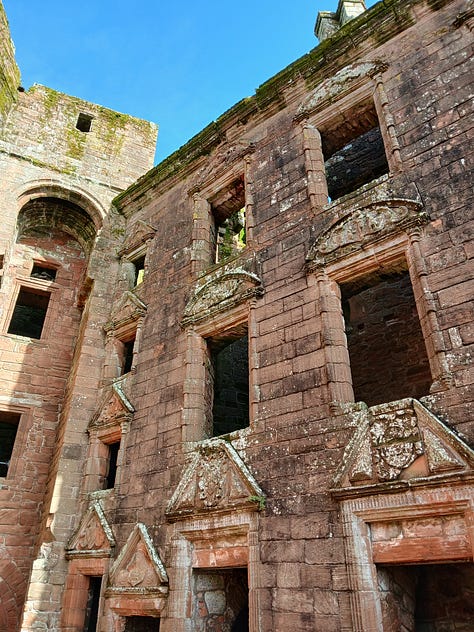
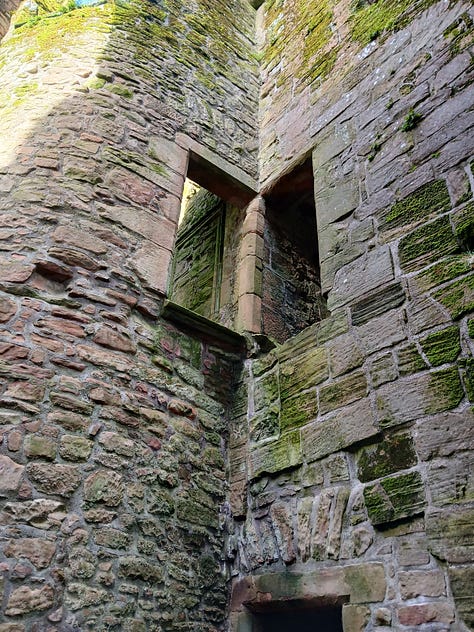

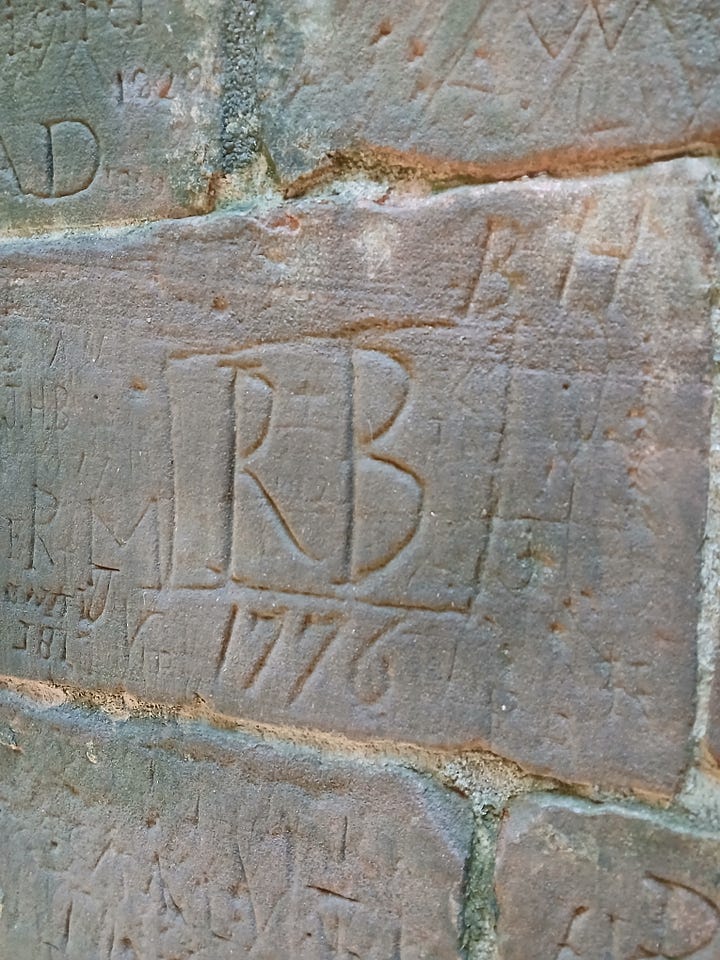
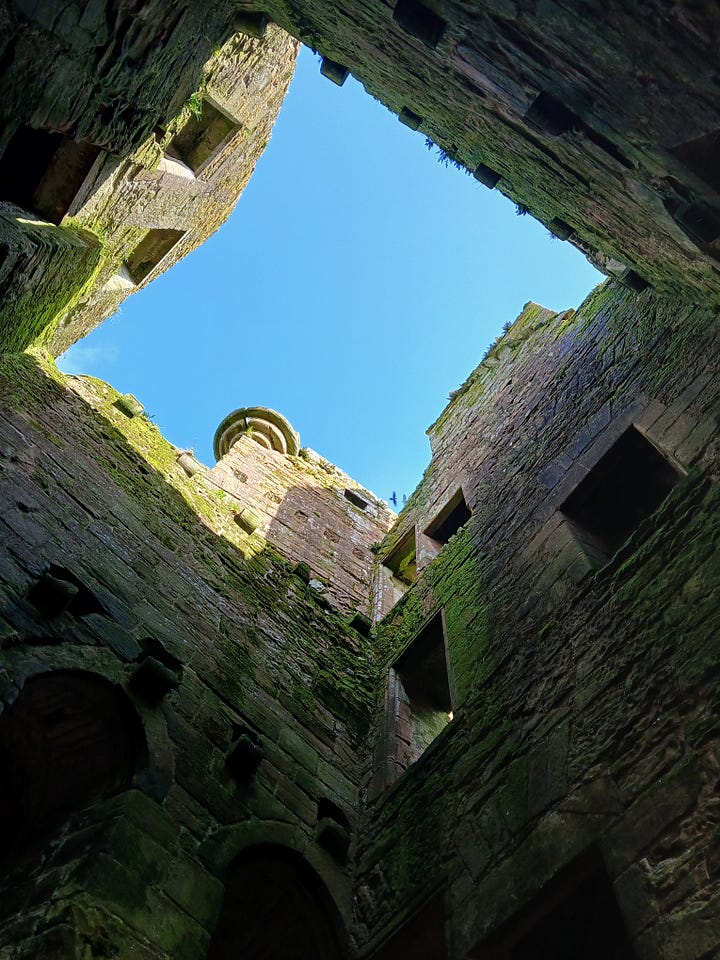
Why, then, was it a ruin? Shortly after the glorious ‘Nithsdale Lodging’ was built, the castle was attacked by Protestant Covenanters. The Covenanters2 had been fighting against King Charles I, who had tried to enforce a new prayer book for the Scottish people to use, with different practices and ideas, although both England and Scotland were largely Protestant at this point. The Covenanters revolted against this and formed an army, fighting against the crown. In 1641, the King signed a treaty that if the Scottish army disbanded, he would pay the army, and also accept the doctrinal changes suggested by the Covenanters. The Covenanters, as well as opposing the King, were also against the remaining Catholic bishops still remaining in Scotland. The Maxwells had remained staunchly Catholic, even after the Reformation, and during this turbulant time, the Covenanters attacked Caerlaverock Castle, a siege lasting from June to September of 1640. Much of the castle was destroyed, and was not lived in after it was surrendered on September 26th.
We wandered up spiral staircases that ended in mid-air, and through the cellar, and glimpsed an awful dungeon that, when there had been a floor, was too short for a man to stand upright in. So much contention and warfare had been witnessed by these silent walls, as well as the unknown personal interactions of the men and women who once lived here, many hundred years ago.
In the museum/ visitors center, they had wonderful remnants of carved stone, beautiful and strange, some of which dates from the earlier castle. Many of these were in excellent condition, having been buried facedown and not exposed to the elements.
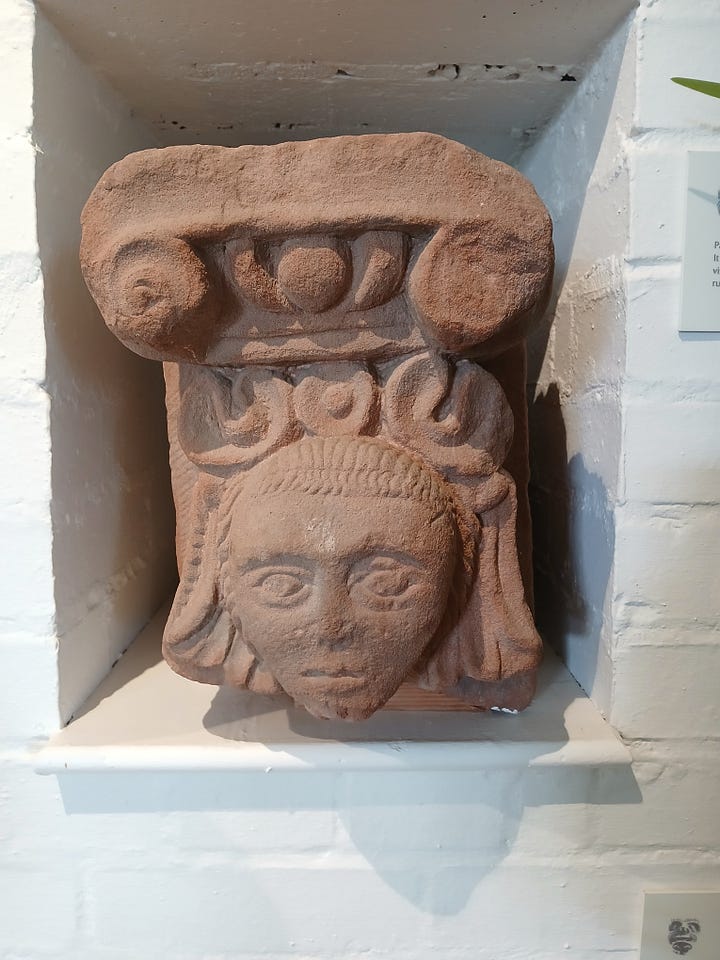
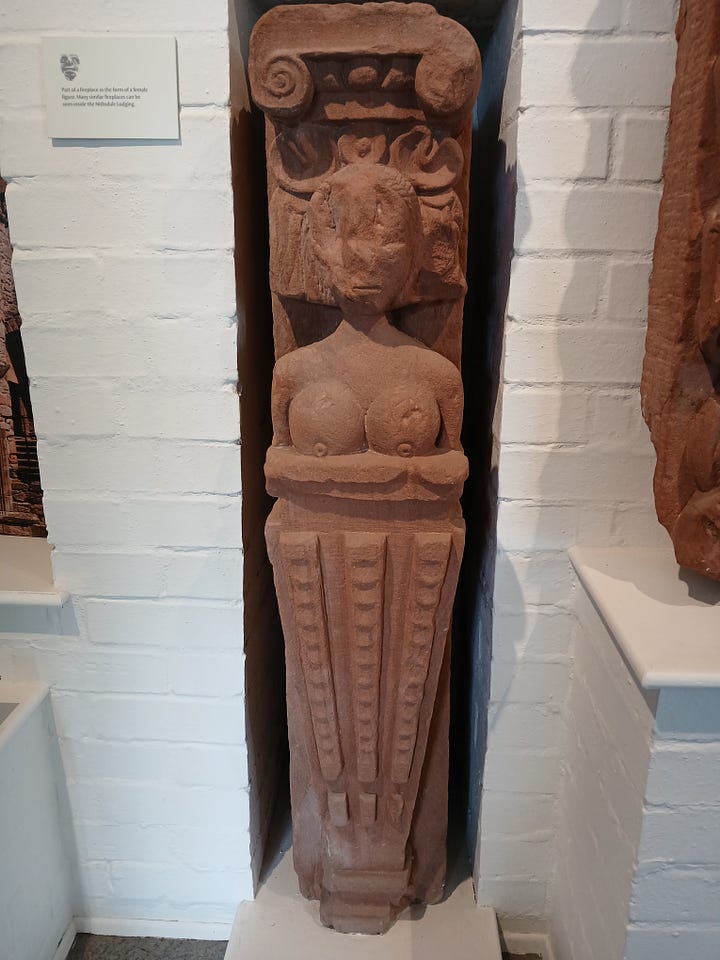
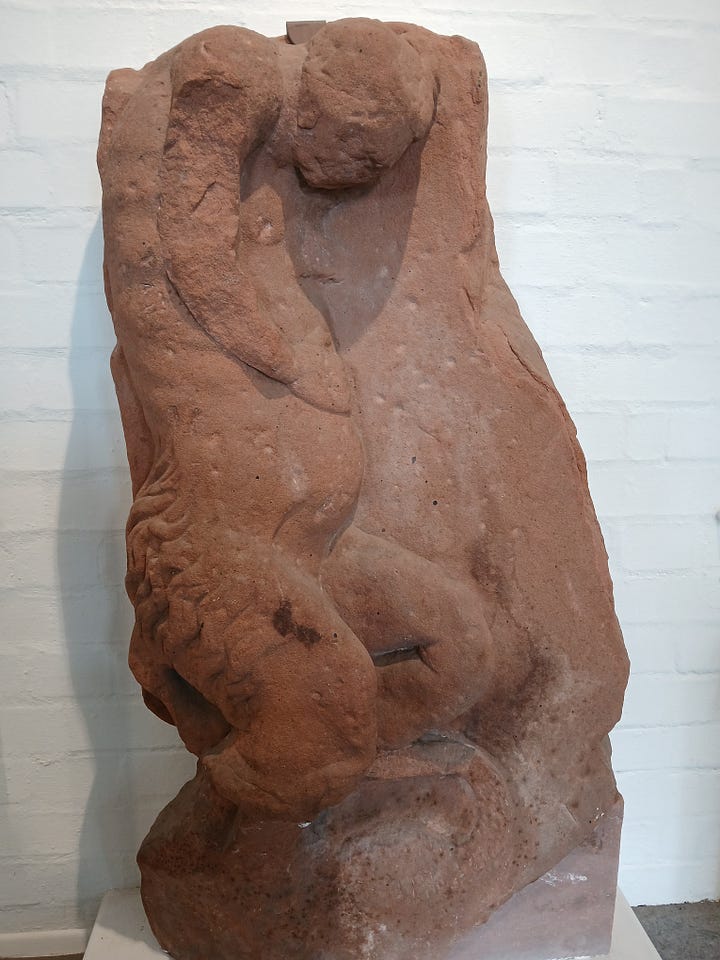
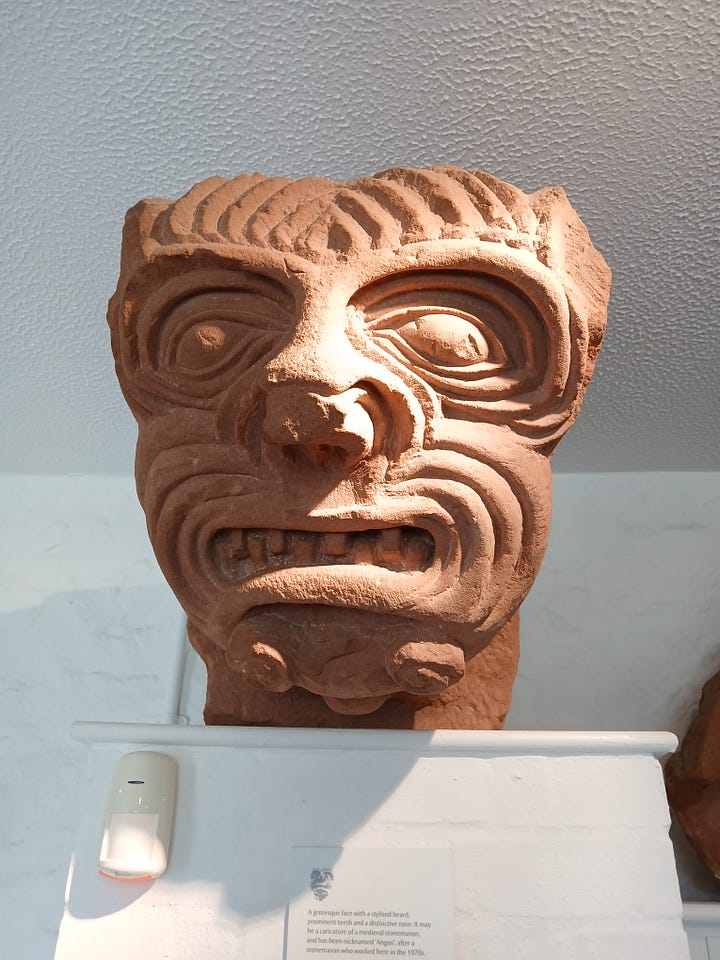
As we left, sheep were grazing in a nearby field. It was a fresh, beautiful morning and we had to be on our way.
Most of the history is taken from this ‘Statement of Significance’: file:///C:/Users/mairi/Downloads/caerlaverock-castle-sos.pdf
The National Covenant, https://scottishhistorysociety.com/the-national-covenant-1637-60/




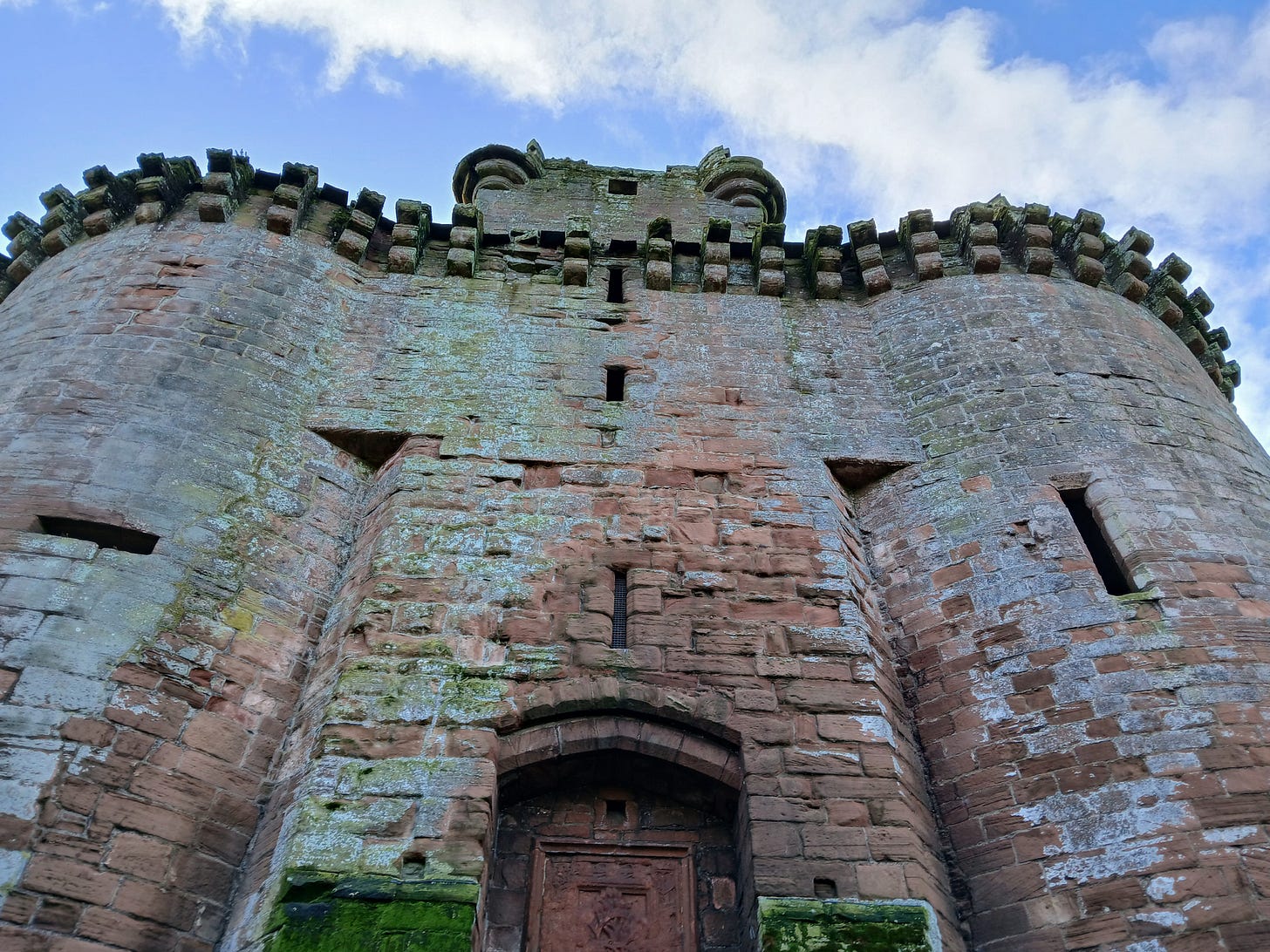
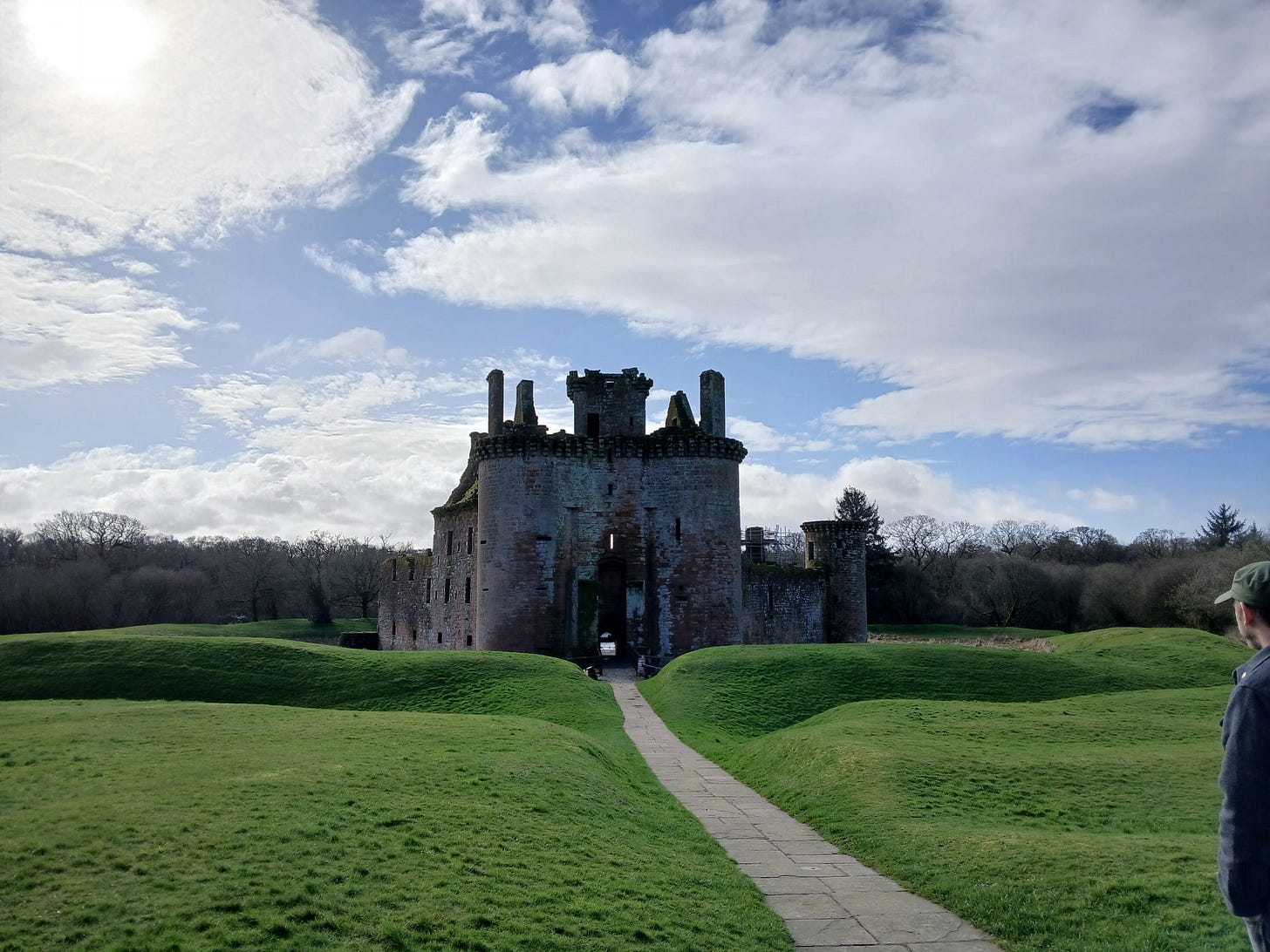
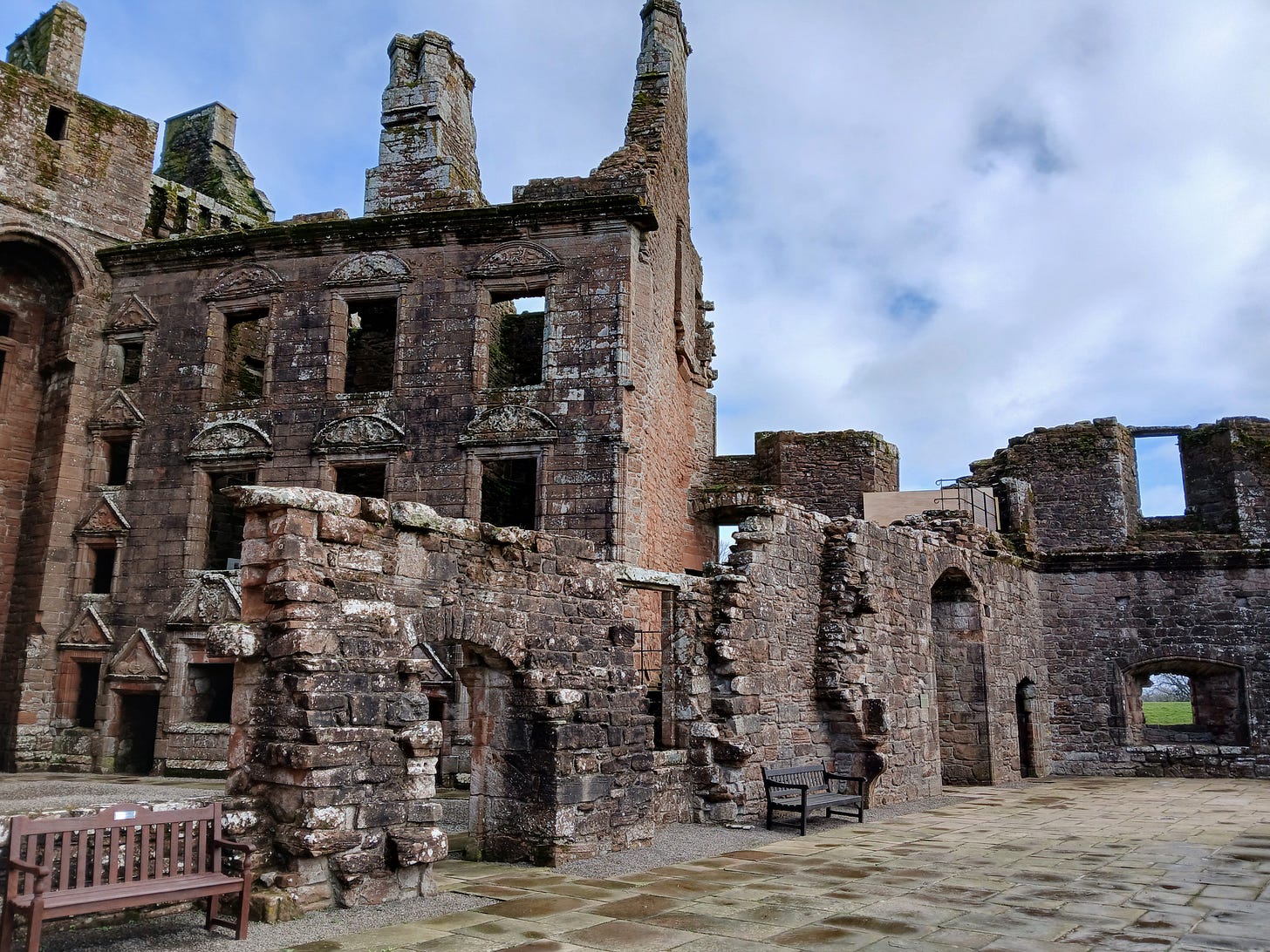
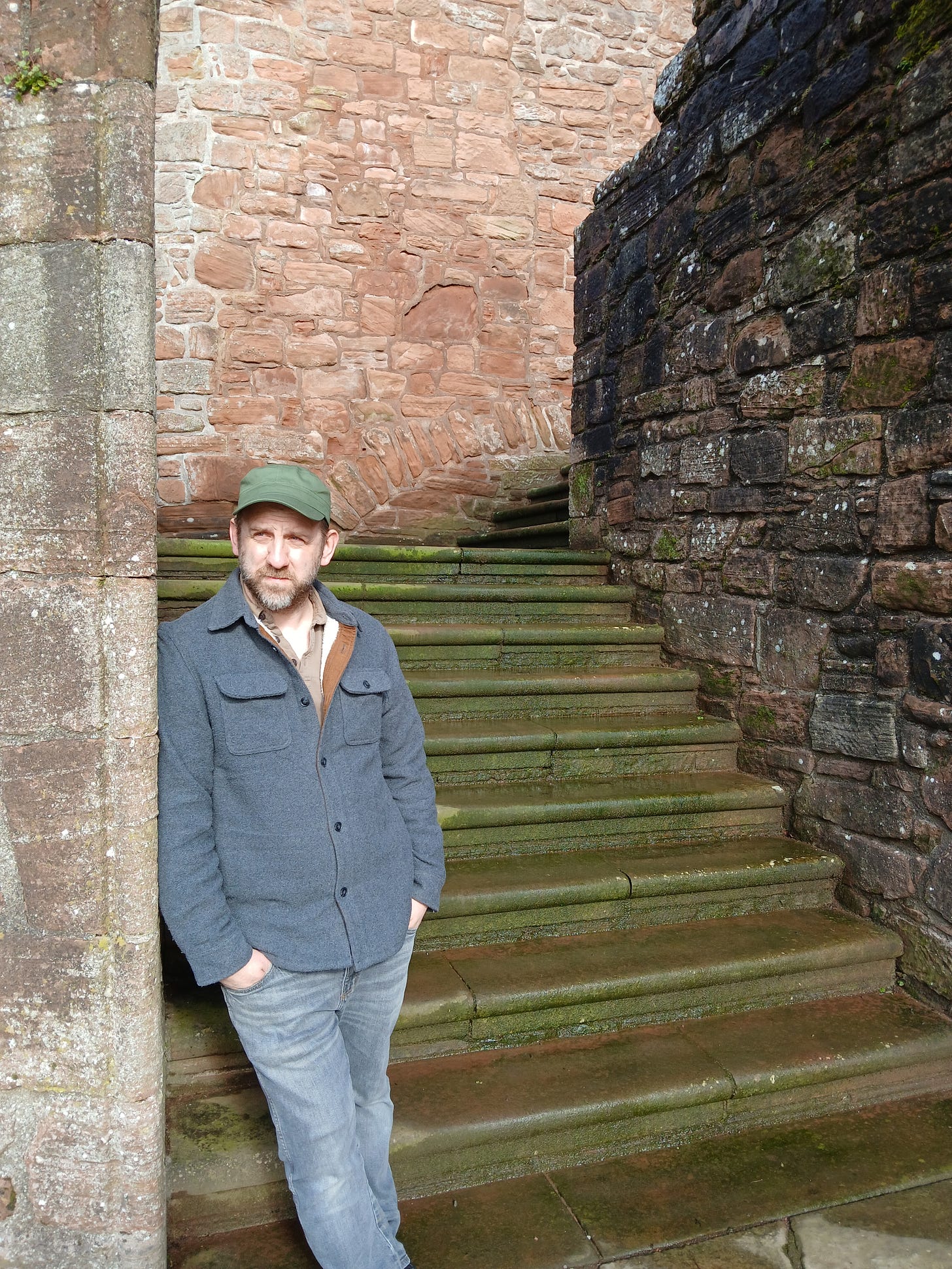
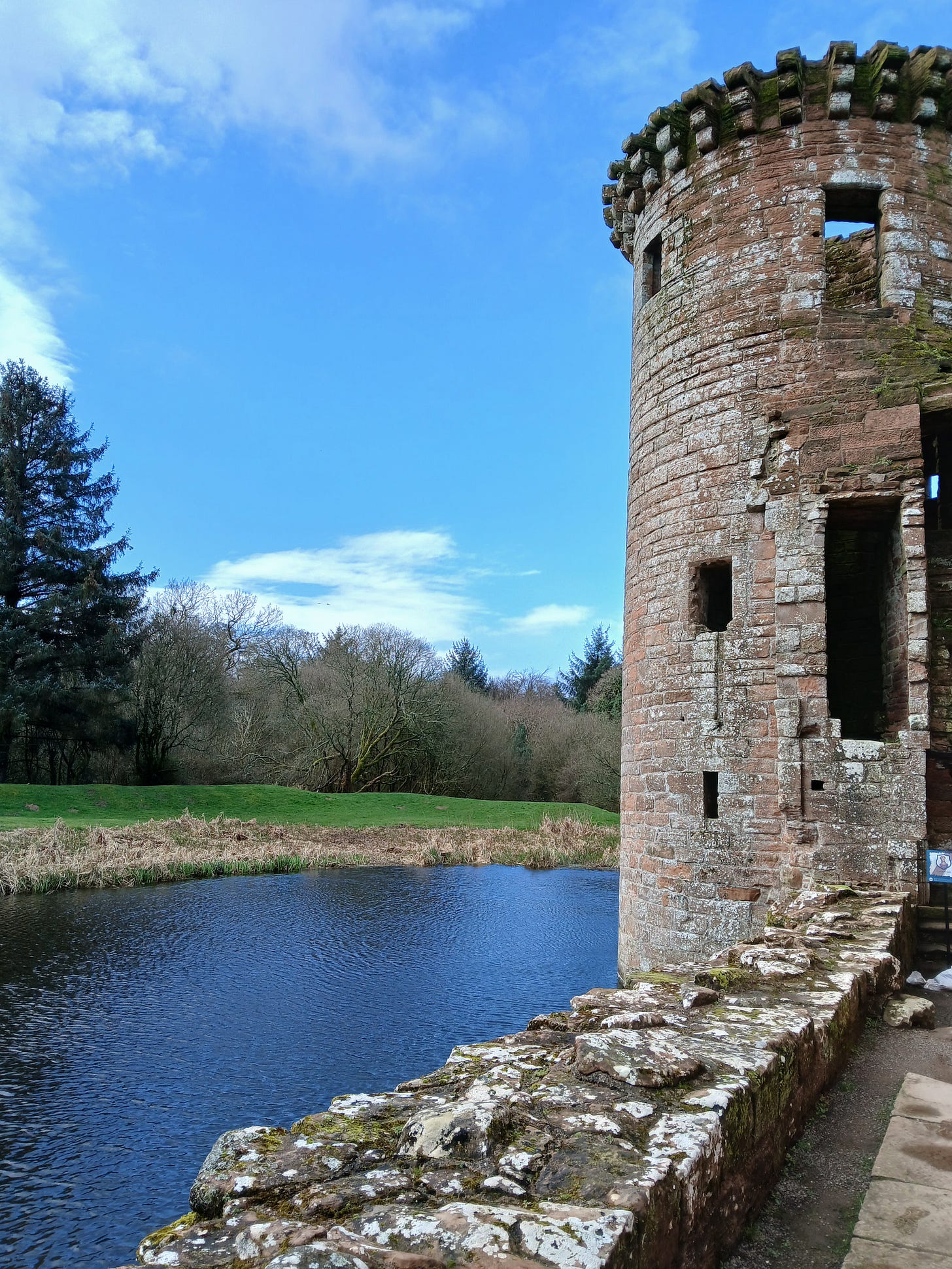
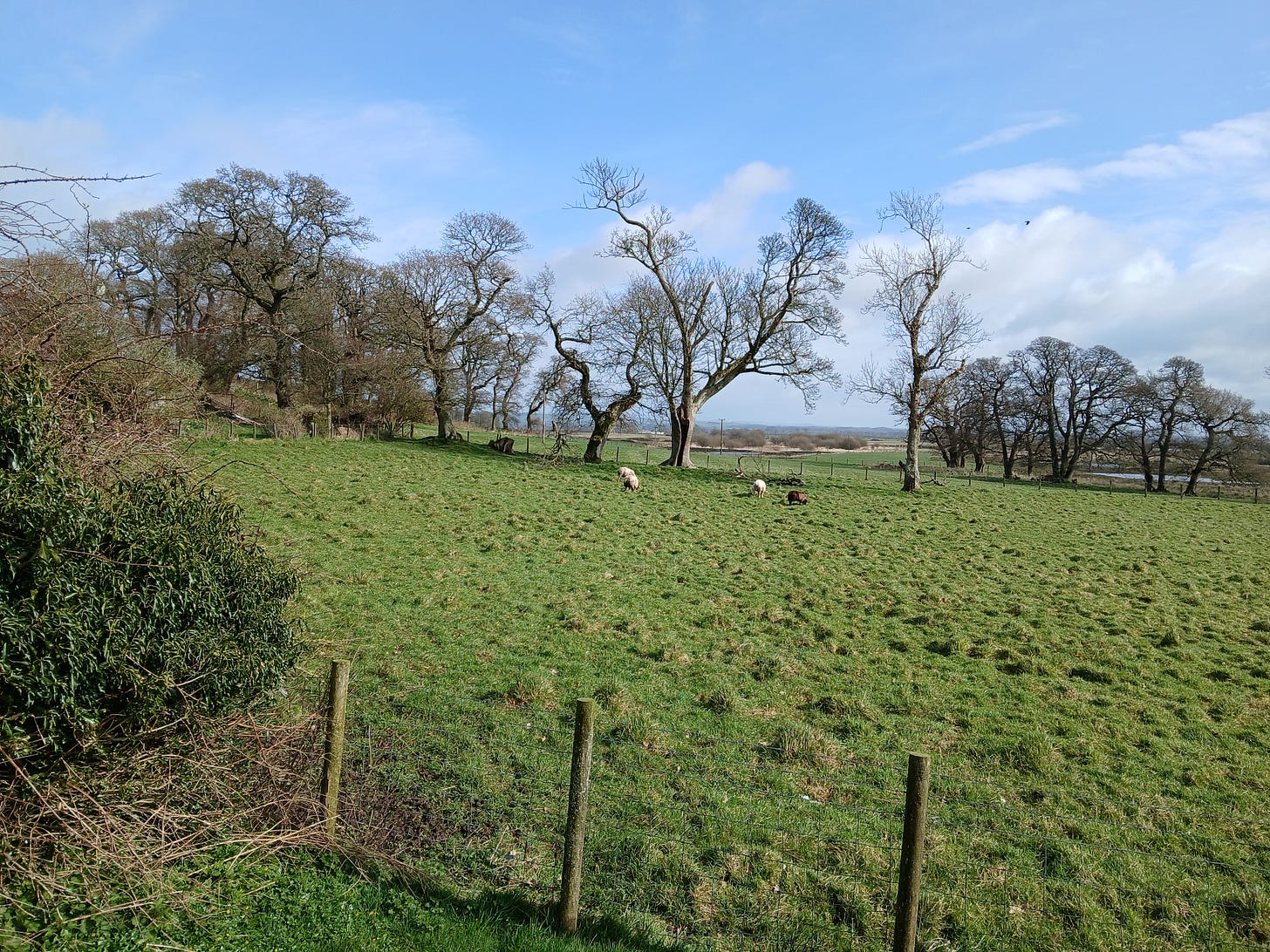
Incredible...it looks like something out of a fairy tale. And thank you for sharing this fascinating and complicated history: I was wholly unaware!
What a beautiful castle. And those stones!! Incredible!